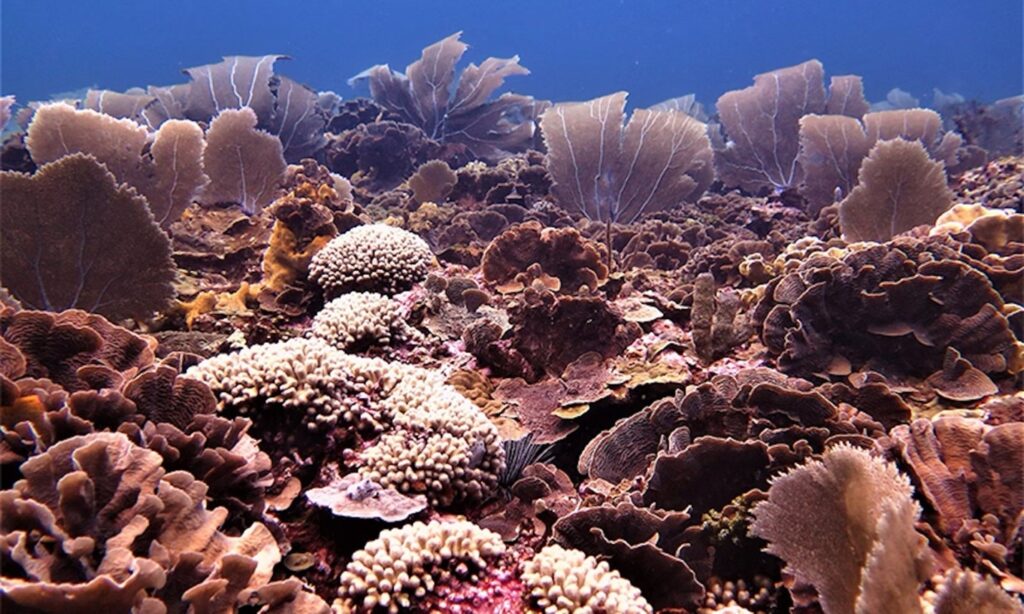
By Beatrice Anderson, S25 Environmental Clinic Student
Global Coral Reef Systems and Climate Change
Aptly nicknamed the “rainforests of the sea”, coral reefs are home to an astonishing 25% of all marine life, despite covering less than 1% of the ocean floor. Coral reefs are an essential part of marine ecosystems, providing food and shelter to thousands of species of fish, coral and other marine life and acting as a natural barrier which can protect coastal communities from flooding and storm surges. Millions of people depend on coral reef systems to support local fishing and tourism industries. Further, corals have proven to be invaluable in medicinal research, with promising developments in cures for cancer and arthritis.
Despite this, coral reef systems remain under threat, largely due to human-induced climate change and overfishing. Corals are living creatures and require specific environmental conditions in order to thrive. Rising water temperatures and increased ocean acidification can cause coral to bleach from stress. Currently 77% of the world’s coral reefs are at risk of bleaching, and roughly 14% of global coral has died after bleaching since 2009.
A Glimmer of Hope in Tela Bay
Tela Bay, situated on the northern coast of Honduras, is part of the Mesoamerican Barrier Reef System—the world’s second-largest coral reef, extending over 1,000 kilometers across Mexico, Belize, Guatemala, and Honduras. The waters of Tela Bay have faced intense temperature changes as well as pollution and runoff from a nearby lagoon. Despite this, the region is home to coral reefs that defy global trends of decline by exhibiting remarkable health and resilience. In 2011, researchers uncovered an important coral bank known as “Banco Capiro” in the waters of Tela Bay. While surrounding reefs bleach and degrade in the changing water, Banco Capiro boasts a live coral cover of 69%, making it the second highest in the Mesoamerican Reef System, surpassed only by nearby Banco Cordelia in Roatán, which has a 72.2% live coral cover. To put this into perspective, this is over four times the average coral cover of the Caribbean, which sits at a mere 18%.
Scientists globally are working to understand how the coral in Tela Bay has managed to survive in conditions which are killing reefs in the same waters. One prominent theory examines the abundance of long-spined sea urchins. In the 1980s, a water-borne pathogen decimated nearly 90% of these urchins across the Caribbean, leading to unchecked algae growth that suffocated many reefs. However, Tela Bay’s urchin populations mysteriously survived this die-off. This potentially increased overall reef health but, as coral reef ecologist Dan Exton notes, it’s a “chicken and egg situation”—uncertain whether the healthy coral promotes urchin survival or vice versa.
Researchers are also exploring whether Tela Bay’s corals harbor heat-resistant symbiotic algae, known as symbionts. Certain types of symbionts can enhance coral tolerance to temperature changes, lending its resilience to its coral hosts. Finally, another hypothesis suggests that fluctuations in salinity levels within Tela Bay may contribute to the reefs’ resilience. Periodic influxes of freshwater from the lagoon could act like a natural rinse, keeping harmful pathogens in check. However, this theory has proven difficult to test and would be difficult to recreate for other reefs without such a freshwater source.
It is clear that understanding the exceptional health of Tela Bay’s coral reefs could revolutionize global coral conservation efforts, especially in the face of climate change and other environmental stressors For scientists fighting the rapid and critical depletion of the elkhorn coral population in Florida’s water, the hope is that the resilience of the Tela Bay reef will be able to be replicated. By working to crossbreed Tela Bay coral with native Florida elkhorn coral, there is real promise that Florida’s coral population will be able to replenish itself, despite increasingly warm ocean temperatures. If successful, these new hybrid reef systems could save millions of marine lives and avoid the catastrophic loss of Florida’s reef systems.
However, this research should also serve as a reminder of the impact we have on the health and survival of marine life. In addition to studying reef resilience, we must also recognize its fragility and take accountability for the part and purpose we serve in our global ecosystem.
